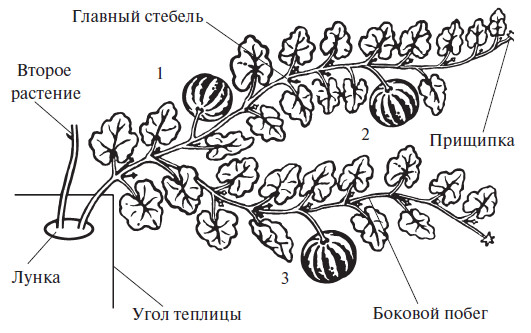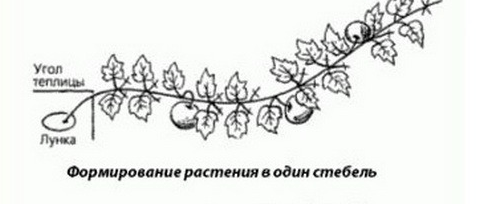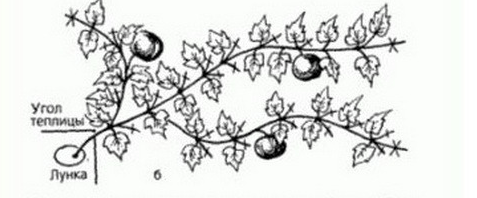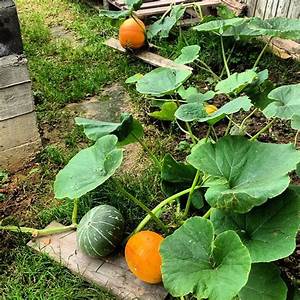How to pinch a pumpkin outdoors to get a good harvest
Pumpkin is remarkable in that it contains five times more carotene than carrots. For the rich content of minerals and vitamins, she is rightly called the queen of autumn. Many tasty and nutritious dishes are prepared from this "sunny" vegetable: cream soups, cereals, pies, casseroles. Not surprisingly, pumpkin is a frequent visitor to garden plots.
In order to harvest a good pumpkin harvest in the fall, gardeners, in addition to traditional care (watering, fertilizing, removing weeds), add special agricultural techniques that allow you to regulate the number and weight of fruits on the bush. Such techniques include pinching, pinching, and forming a pumpkin bush.
The content of the article
Why do you need to pinch a pumpkin in the open field
Pinching and caring for pumpkin in the open field is the key to getting a rich harvest of a healthy vegetable.
Pumpkin belongs to those crops that require formation throughout the entire period of growth of the bush. Pinching and pinching allow the gardener to regulate the number of pumpkins on the plant, to grow large or smaller fruits.
How many ovaries should you leave on the pumpkin? If left on a bush many ovaries, pumpkins will grow small and do not have time to fully mature before the end of the garden season. If you leave one ovary, one large pumpkin will grow.
reference... The pumpkin is native to hot Mexico. After the discovery of America, culture spread to all continents. In the temperate zone, summers are short and often cool. In such climatic conditions, it is impractical to leave more than three or four fruits on the plant, they simply will not have time to ripen before the end of the season.
In addition, too many ovaries slow down the maturation of the mature pumpkins. Fruits that are not fully ripe are not as tasty and store poorly.
The formation of a pumpkin bush begins with a pinch... This is an agricultural technique with the help of which the upper part of the growing shoot is removed. Its purpose is to enhance the growth and development of the lateral lashes.
The richer the soil, the more lashes develop in one plant. Peduncles appear on each branch, small pumpkins are tied. The greens of the bush take up a lot of nutrients, as a result, the pumpkin begins to "starve".
Restricting the growth of green mass forces the plant to direct all its forces to the filling and ripening of the available pumpkins. In addition, the formation of a bush improves the access of air and light to the plant, increases productivity, promotes faster ripening, and improves the taste of fruits.
Important! If the bush is allowed to grow freely, the root system will not cope with providing the fruit with all the necessary nutrients.
When to pinch a pumpkin? While the lash will reach a length of 1.5-2 meters.
Pinching a pumpkin correctly: rules and tips
Consider how to properly shape a pumpkin to get a harvest in the fall.
Competent pinching is carried out in accordance with the following rules:
- If your goal is to grow more medium-sized pumpkins, then pinch the main whip, preventing it from growing. As a result, many lateral shoots will grow, on which fruits will form.
- To increase yields, excess shoots are removed. Thinning the green mass of the bush improves light access and air circulation.
- If the gardener set out to grow large fruits, then two or three lashes are left, choosing the largest and most powerful. All other shoots are cut off.
- 3-4 ovaries are left on each lash. The lash is cut so that 4-5 leaves remain above the last ovary.

After pinching and pinching, the leaves, stems and fruits are periodically examined to make sure that no infection has penetrated the plants through the wounds.
When the pumpkins are formed, a board or other dense material is placed under them. This will protect the vegetable from damage.
When growing several bushes, it is convenient to form them in different ways. For example, lead one bush into one stem, the other into two, etc. This is how the most profitable and convenient way of forming a pumpkin bush is selected.
Attention! All work on the formation of the pumpkin is carried out in the morning, preferably in cool weather. Then the plant recovers quickly.
Small-fruited varieties of culture bear fruit well without forming bushes. To obtain a good harvest, it is enough to have a well-prepared soil and favorable weather.
Breeders brought out many varieties and hybrids of pumpkin... All of them are divided into two types: bush and multi-plaited.
In multi-vine varieties, all shoots lead in a certain direction. The whips are pinched, the plant is pinned, the excess leaves are removed.
Shrub varieties of the crop are distinguished by upward-growing stems and many lashes. The fruits are formed at the very base of the bush. Such pumpkins need to form bushes, remove shoots without ovaries and excess foliage. The first fruit formed on the main whip is pinched.
Bush varieties are planted at a distance of 50 cm from each other. Between medium-growing varieties, an interval of 80 cm is maintained.The planting scheme for strong-growing varieties is 120x110 cm.
Climbing varieties
Climbing pumpkin varieties are distinguished by the rapid growth of stems and leaves. The more nutrients in the soil, the more intensively the bush grows.
For small-fruited varieties, plant formation is not required. It is enough to spread the lashes so that they do not interfere with each other. Trim the leaves? Cut only those leaves that shade the ovaries and formed fruits.
Sprinkle the scourge with damp earth. This will give the branches roots, which will provide the plant with additional nutrition. On this, the formation of the bush is considered complete.
It is recommended to pinch medium and large-fruited varieties. In this case, pumpkins will ripen before the onset of cold weather.
The main purpose of pinching is to stop the growth of the shoot.... 3-4 fruits are left on the main lash. After the last pumpkin, 4-5 leaves are counted and the whip is pinched off. The growth of side shoots is similarly restricted.
From the side shoots, 2 or 3 of the strongest are isolated, and the rest are removed. This allows the plant to direct all its energy towards ripening the fruit.
Depending on the variety and region of cultivation, the most convenient way to form a bush is selected. The plant is led into one, two (main and lateral) or three stems (main and two lateral).

Forming a pumpkin bush in one lash
With this method of shaping, only the main shoot is left on the pumpkin bush. The pinching is done when two or three pumpkins are formed on the main lash. 4–5 leaves are counted from the last pumpkin on the lash and the stem is cut off.
In two lashes
When formed into two stems, in addition to the main lash, one more lateral process is left, the most powerful and strong. 1-2 fruits are left on the main whip, and 1 fruit on the side. Pinching of the lashes is done after 4-5 leaves from the last pumpkin on the shoot.
In three lashes
With this method of shaping, three stems are left on the bush: the main one and two lateral ones. On all three lashes, 1-2 pumpkins are left. Plucking the lashes is also done after 4-5 leaves from the last pumpkin on the lash.

Bush varieties
Bush pumpkin varieties are distinguished by compact bushes with small whips in length.It is convenient to grow such a pumpkin in small garden plots when it is not possible to allocate a large area for pumpkin beds.
In bush varieties of the culture, pumpkins are formed at the very base of the bush. Scourges grow upward, and do not spread along the ground, like a climbing "relative".
The main advantage of bush crop varieties is early maturity. Fruits fully ripen on average in 85-100 days from the moment of germination and are characterized by excellent taste.
Attention! The size of pumpkins in bush varieties is smaller than in climbing ones. Fruits weigh on average from 0.5 to 3 kg. Such pumpkins are often called portioned. It is convenient to use them entirely at once for cooking.
Bush pumpkins do not throw long lashes, so you do not need to shorten them. But such a pumpkin also needs shaping. The bush should not be too thick, therefore, as the plant grows, the side shoots without ovaries are removed and the leaves shading the ovaries and formed pumpkins are cut off.
Thinning bush gourd warns illness, improves air flow to the bush and access to sunlight.
Is it worth trimming the leaves of bush varieties
Gardeners growing bush pumpkin often wonder whether it is necessary to pick off the leaves to accelerate the ripening of the fruit? After all, the greenery of such bushes is lush and takes a lot of nutrients from the soil. But the experts answer - No, it doesn `t need.
Leaves "work" for fruit ripening no less than the root system. In the process of photosynthesis, the leaves use food from the soil to form the organic matter needed by pumpkins. Roots and leaves are tireless "workhorses", without which the formation of fruits is impossible.
Growing pumpkin without pinching

The pumpkin is native to tropical latitudes, so it loves warmth, sunlight and moisture.
The pinching and formation of pumpkin bushes is a necessary measure due to our climatic conditions. Without the formation of a bush, the pumpkin will continue to grow lashes, bloom and form new ovaries until the onset of frost.
At the same time, the formed fruits will not have time to ripen. Pinching the top restrains the growth of the bush, and the remaining leaves switch to feeding the existing pumpkins.
Every gardener decides for himself whether to turn into a pumpkin or not. The answer to this question depends on the variety of the crop, weather conditions, the purpose of growing the vegetable.
Of course, a decent vegetable harvest will grow without pinching. The main thing is warm and well-fertilized soil. But not all fruits will have time to ripen before the onset of cold weather.
If you are wondering whether to form a culture or not, keep in mind that the most delicious pumpkin is a ripe pumpkin. And unripe fruits are not only inferior in taste, but are also worse stored. Until the next harvest, only the vegetable that has ripened on the ground will last.
Read also:
The best varieties of pumpkin for open ground with photos and descriptions.
Conclusion
Plucking a pumpkin is a technique determined by the climatic conditions of our latitudes. A competently performed procedure allows you to grow larger fruits that fully ripen in the garden until the end of the season.
The choice of pinching and pinching scheme depends on the pumpkin variety, weather conditions and the purposes for which the vegetable is grown.